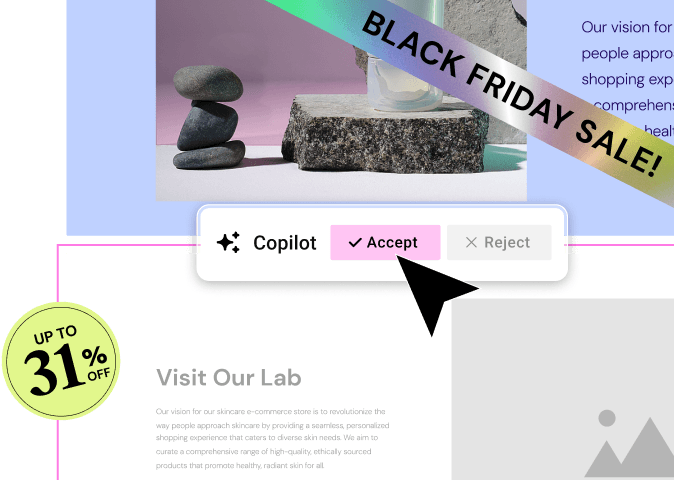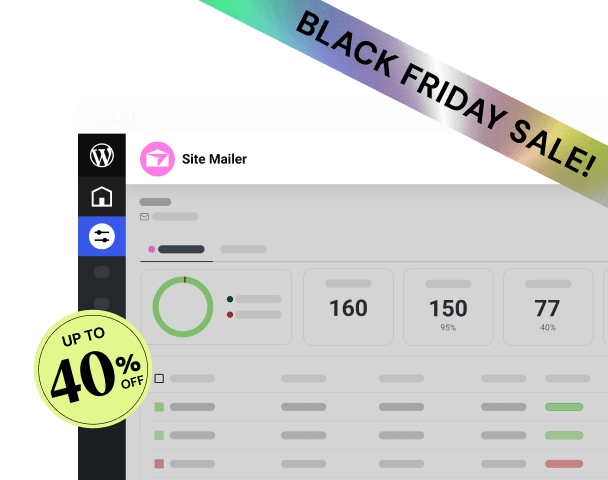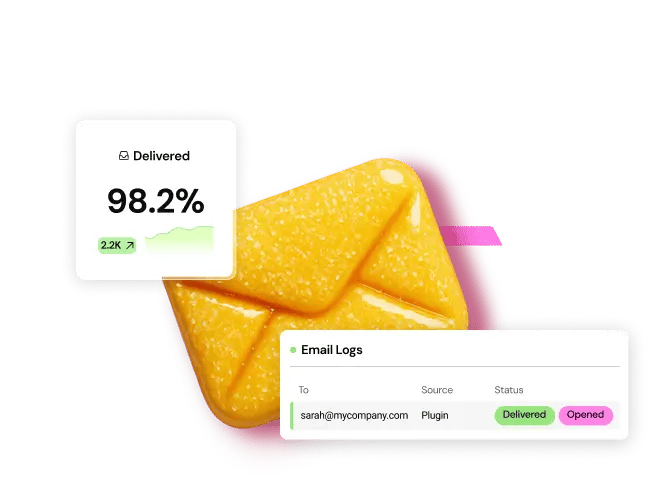Table of Contents
This guide will walk you through 30 essential WordPress SEO best practices. We’ll cover everything from the foundational steps you need to take when setting up your site to advanced techniques that can give you a competitive edge. Whether you’re a beginner just starting with WordPress or an experienced user looking to refine your strategy, you’ll find actionable tips to help you climb the search rankings.
Key Takeaways
- Foundational SEO is Crucial: Start with the basics like checking your site’s visibility settings, using SEO-friendly URLs, and installing a dedicated SEO plugin. These initial steps create the foundation for all your other efforts.
- Content is King, but Keywords are the Key: High-quality content is essential, but it won’t be effective if people can’t find it. Proper keyword research helps you understand what your audience is searching for, allowing you to create content that meets their needs and ranks well.
- Technical SEO Matters: Aspects like site speed, mobile-friendliness, and a secure connection (HTTPS) are significant ranking factors. A technically sound website provides a better user experience, which search engines reward.
- On-Page Optimization is a Must: Pay close attention to on-page elements like title tags, meta descriptions, headings, and internal linking. These signals help search engines understand the structure and relevance of your content.
- Off-Page SEO Builds Authority: Building high-quality backlinks from reputable websites is one of the most powerful ways to improve your site’s authority and search rankings.
- User Experience (UX) is SEO: Search engines prioritize websites that offer a great user experience. This includes fast loading times, easy navigation, and engaging content that encourages visitors to stay longer.
- Tools Can Simplify the Process: Using tools like Google Analytics, Google Search Console, and plugins like Elementor can make implementing and monitoring your SEO strategy much more manageable.
Foundational WordPress SEO
Before you dive into content creation and link building, you need to ensure your WordPress site is set up correctly for SEO. These foundational steps are often overlooked but are critical for success.
1. Check Your Site’s Visibility Settings
This might sound obvious, but it’s a common mistake that can completely derail your SEO efforts. WordPress has a built-in option to “Discourage search engines from indexing this site.” This setting is useful when your site is under construction, but if it’s accidentally left on after you launch, your site will be invisible to Google.
How to check:
- Log in to your WordPress dashboard.
- Go to Settings > Reading.
- Scroll down to Search Engine Visibility.
- Make sure the box next to “Discourage search engines from indexing this site” is unchecked.
- Click Save Changes.
It’s a simple check that can save you a lot of headaches down the line.
2. Use SEO-Friendly URLs (Permalinks)
SEO-friendly URLs are URLs that are easy for both humans and search engines to read and understand. They should be descriptive and contain keywords related to the page’s content. WordPress allows you to customize your URL structure, also known as permalinks.
By default, WordPress might use a URL structure that isn’t very descriptive, like http://yourdomain.com/?p=123. This doesn’t tell you anything about the content of the page. A much better structure is the Post Name option, which looks like this: http://yourdomain.com/your-post-name/.
How to set up SEO-friendly URLs:
- In your WordPress dashboard, go to Settings > Permalinks.
- Select the Post Name option.
- Click Save Changes.
This is one of the first things you should do on a new WordPress site. It makes your URLs cleaner, more memorable, and better for SEO.
3. Install a Dedicated WordPress SEO Plugin
A good SEO plugin can simplify many of the technical aspects of WordPress SEO. These plugins provide you with the tools to optimize your title tags, meta descriptions, create XML sitemaps, and much more, without needing to touch any code.
There are several excellent SEO plugins available, with Yoast SEO, All in One SEO Pack, and Rank Math being the most popular choices. They all offer robust free versions that are more than sufficient for most websites.
Why you need an SEO plugin:
- Content Optimization: They analyze your content for keyword usage, readability, and other on-page SEO factors, giving you actionable suggestions for improvement.
- Technical SEO: They help you with technical tasks like creating an XML sitemap, editing your robots.txt file, and adding schema markup.
- Social Media Integration: They allow you to control how your content appears when shared on social media platforms like Facebook and Twitter.
For web creators using Elementor, these plugins integrate seamlessly, allowing you to manage your SEO settings directly within the visual editor.
4. Set Up an XML Sitemap
An XML sitemap is a file that lists all the important pages on your website, making it easier for search engines to find and index your content. Think of it as a roadmap for search engine crawlers. While search engines can find your pages without a sitemap, having one helps them discover your content more quickly and efficiently, especially if you have a large site or new content that isn’t heavily linked to yet.
Most modern WordPress SEO plugins, like Yoast SEO or Rank Math, will automatically generate an XML sitemap for you. Once you’ve installed the plugin, you can typically find your sitemap by going to yourdomain.com/sitemap_index.xml.
How to submit your sitemap to Google:
- Set up a Google Search Console account (more on this later).
- In your Search Console dashboard, go to Sitemaps.
- Enter the URL of your sitemap and click Submit.
This tells Google where to find your sitemap and encourages it to crawl your site.
5. Secure Your Site with HTTPS
HTTPS (Hypertext Transfer Protocol Secure) is the secure version of HTTP. It encrypts the data sent between a user’s browser and your website, protecting sensitive information like login details and credit card numbers.
Google has officially confirmed that HTTPS is a ranking signal. A secure site is seen as more trustworthy, and Google wants to send its users to safe and reliable websites. If your website URL starts with http:// instead of https://, you need to make the switch.
Most reputable web hosting providers, including Elementor Hosting, offer free SSL certificates. Once your hosting is set up with an SSL certificate, you’ll need to update your WordPress settings to use HTTPS.
How to switch to HTTPS in WordPress:
- Install a plugin like Really Simple SSL. This plugin will automatically detect your SSL certificate and configure your website to use it.
- Alternatively, you can manually update your WordPress Address (URL) and Site Address (URL) in Settings > General to use https://. You’ll also need to set up a 301 redirect to send all HTTP traffic to HTTPS.
Keyword Research and Content Strategy
Once your foundation is solid, it’s time to focus on what will truly drive traffic to your site: your content. But you can’t just write about anything. You need a strategy based on what your target audience is searching for.
6. Conduct Thorough Keyword Research
Keyword research is the process of finding the words and phrases (keywords) that people use when they search for information online. By understanding these keywords, you can create content that directly addresses your audience’s needs and has a higher chance of ranking in search results.
How to get started with keyword research:
- Brainstorm: Start by making a list of topics relevant to your business or website. Think about what your customers might be looking for.
- Use Keyword Research Tools: There are many tools available, both free and paid, that can help you find keywords. Google Keyword Planner is a good free option, though it’s geared towards advertisers. Other popular tools include Ahrefs, SEMrush, and Ubersuggest.
- Analyze Your Competitors: Look at what keywords your competitors are ranking for. This can give you great ideas for content you can create.
When choosing keywords, pay attention to search volume (how many people are searching for the keyword) and keyword difficulty (how hard it is to rank for that keyword). A good strategy is to target long-tail keywords (longer, more specific phrases) which often have lower competition and higher conversion rates.
7. Plan Your Content Strategy
Once you have your keywords, you need to plan your content. A good content strategy ensures that you’re consistently creating high-quality, relevant content that will attract and engage your audience.
Key elements of a content strategy:
- Content Pillars: Identify the main topics or categories you want to be known for. These will be the foundation of your content.
- Content Calendar: Create a schedule for when you’ll publish new content. This helps you stay organized and consistent.
- Content Formats: Decide on the types of content you’ll create. This could include blog posts, tutorials, videos, infographics, case studies, and more.
- User Intent: For each piece of content, think about the user’s intent. Are they looking for information, a product to buy, or a solution to a problem? Your content should be tailored to meet that intent.
An effective tool for planning your content is the Elementor AI Site Planner, which can help you generate ideas and structure your website content.
8. Write High-Quality, In-Depth Content
Google’s primary goal is to provide its users with the best possible answers to their queries. This means that high-quality, comprehensive content is more likely to rank well. Avoid thin content that doesn’t provide much value. Instead, aim to create the best resource on the topic.
As Itamar Haim, a seasoned web creation expert, often says, “Don’t just write for search engines; write for people. When you create truly valuable content that helps your audience, the search rankings will follow.”
What makes content high-quality?
- Comprehensive: It covers the topic in detail, answering all the questions a user might have.
- Well-Researched: It’s based on accurate information and, where possible, cites sources.
- Well-Written: It’s easy to read, free of grammatical errors, and engaging.
- Unique: It offers a unique perspective or provides information that isn’t readily available elsewhere.
This is where a powerful editor like Elementor shines. It allows you to create visually appealing and well-structured content without being limited by the default WordPress editor.
9. Optimize Your Content with AI
Artificial intelligence can be a powerful ally in your content creation process. AI tools can help you generate ideas, write drafts, optimize your content for SEO, and even create images.
Elementor AI is integrated directly into the editor, allowing you to leverage AI to write and refine your content on the fly. You can use it to:
- Generate headlines and paragraphs.
- Translate your content into different languages.
- Adjust the tone of your writing.
- Generate custom CSS and HTML.
Using an AI website builder can streamline the entire process of creating an SEO-optimized website from scratch.
On-Page SEO Best Practices
On-page SEO refers to the optimization of individual web pages to rank higher and earn more relevant traffic in search engines. This includes optimizing your content and the HTML source code of a page.
10. Craft Compelling Title Tags
The title tag is the title of your web page that appears in the browser tab and in search engine results pages (SERPs). It’s one of the most important on-page SEO factors because it gives search engines and users a quick overview of what the page is about.
Best practices for title tags:
- Include your target keyword: Place your main keyword at the beginning of the title tag, if possible.
- Keep it concise: Aim for a title tag that is between 50-60 characters long. Longer titles may be truncated in search results.
- Make it clickable: Your title should be compelling and encourage users to click on your link.
- Be unique: Every page on your site should have a unique title tag.
Your SEO plugin will provide a field where you can easily edit the title tag for each page and post.
11. Write Engaging Meta Descriptions
The meta description is the short snippet of text that appears under your title tag in search results. While it’s not a direct ranking factor, a good meta description can significantly improve your click-through rate (CTR).
Best practices for meta descriptions:
- Keep it under 160 characters: Like title tags, meta descriptions have a limited length in SERPs.
- Include your keyword: Google often bolds the search query in the meta description, which can draw the user’s eye.
- Write compelling copy: Think of your meta description as ad copy for your page. It should be persuasive and give users a reason to visit your site.
- Be unique: Each page should have its own unique meta description.
12. Use Headings (H1, H2, H3) Correctly
Headings not only make your content easier for readers to scan, but they also help search engines understand the structure and hierarchy of your content.
- H1 Tag: This is your main headline. You should only have one H1 tag per page, and it should contain your primary keyword. In WordPress, the post or page title is typically the H1 tag.
- H2 Tags: Use H2 tags for the main subheadings of your content. These are a good place to include secondary keywords or variations of your main keyword.
- H3-H6 Tags: Use these for further subheadings within your H2 sections.
Using headings correctly creates a logical structure that improves both readability and SEO.
13. Optimize Your Images
Images are a great way to make your content more engaging, but they can also slow down your website if they’re not optimized. Large image files are one of the most common causes of slow page load times.
How to optimize your images for SEO:
- Compress Your Images: Before uploading images to WordPress, use a tool to compress them. This reduces the file size without significantly impacting the quality. There are also WordPress plugins that can do this automatically, like the Image Optimizer by Elementor.
- Use Descriptive File Names: Name your image files with descriptive, keyword-rich names (e.g., wordpress-seo-best-practices.jpg instead of IMG_1234.jpg).
- Add Alt Text: Alt text (alternative text) is a short description of your image. It’s used by screen readers for visually impaired users and by search engines to understand the content of the image. Make your alt text descriptive and include your target keyword if it’s relevant.
14. Implement Internal Linking
Internal links are links from one page on your website to another page on your website. They are incredibly important for SEO for several reasons:
- They help search engines discover your content: When search engines crawl a page on your site, they follow the links on that page to find other pages.
- They pass authority (link equity): If you have a page with a lot of authority, you can pass some of that authority to other pages on your site by linking to them.
- They improve user experience: Internal links help users navigate your website and find related content, which can keep them on your site longer.
A good practice is to link to 2-5 other relevant posts every time you publish a new piece of content.
15. Use External Links
External links are links from your website to other websites. While it might seem counterintuitive to send users away from your site, linking to high-quality, relevant resources can actually be beneficial for your SEO.
- It builds trust: Linking to authoritative sources shows that your content is well-researched and trustworthy.
- It provides value to your users: You’re helping your users find more information on a topic, which improves their experience.
When you link out, make sure you’re linking to reputable websites.
Technical SEO Best Practices
Technical SEO refers to the optimizations you make to your website and server that help search engine spiders crawl and index your site more effectively. It’s the “under the hood” stuff that can have a big impact on your rankings.
16. Improve Your Website Speed
Website speed is a critical ranking factor. A slow website leads to a poor user experience, which can increase your bounce rate and hurt your rankings. People expect websites to load quickly, and if yours doesn’t, they’ll likely go elsewhere.
How to improve your website speed:
- Choose a Good Hosting Provider: Your web host has a significant impact on your site speed. Opt for a performance-optimized solution like Elementor Hosting, which is specifically designed for WordPress and Elementor sites.
- Use a Caching Plugin: Caching plugins create a static version of your site, which can be served to users much faster than processing the PHP scripts for every page load.
- Optimize Your Images: As mentioned earlier, large images are a major cause of slow load times.
- Use a Content Delivery Network (CDN): A CDN stores copies of your site’s static files on servers around the world. When a user visits your site, they are served the files from the server closest to them, which reduces latency.
- Keep Your Site Updated: Make sure your WordPress core, themes, and plugins are always up to date.
You can test your website speed using tools like Google PageSpeed Insights and GTmetrix.
17. Ensure Your Site is Mobile-Friendly
With the majority of internet traffic now coming from mobile devices, having a mobile-friendly website is essential. Google uses mobile-first indexing, which means it primarily uses the mobile version of your content for indexing and ranking.
How to make your site mobile-friendly:
- Use a Responsive Theme: A responsive theme automatically adjusts its layout to fit the screen size of the device it’s being viewed on. The Hello theme from Elementor is a lightweight and highly flexible option that is fully responsive.
- Design with Mobile in Mind: When building your pages with a tool like Elementor, you can easily switch between desktop, tablet, and mobile views to ensure your design looks great on all devices.
- Use Large Fonts and Buttons: Make sure your text is easy to read and that buttons and links are easy to tap on a small screen.
You can check if your site is mobile-friendly using Google’s Mobile-Friendly Test tool.
18. Add Schema Markup (Structured Data)
Schema markup is a type of code that you can add to your website to help search engines better understand your content. This can lead to rich snippets in search results, which are enhanced listings that can include things like star ratings, prices, and event dates.
Rich snippets can make your listing stand out in the SERPs and significantly increase your CTR.
While you can add schema markup manually, it can be quite technical. Fortunately, most good SEO plugins, including Yoast SEO and Rank Math, have built-in features for adding schema markup for common content types like articles, products, and recipes.
19. Fix Broken Links
Broken links (links that lead to a 404 error page) are bad for both user experience and SEO. They can frustrate users and prevent search engines from crawling your site effectively.
It’s a good practice to regularly check your site for broken links and fix them. You can use a tool like the Broken Link Checker plugin for WordPress or an online tool like Ahrefs’ Broken Link Checker.
When you find a broken link, you have a few options:
- Correct the link: If it’s a simple typo, you can edit the link to point to the correct URL.
- Remove the link: If the page the link was pointing to no longer exists and there’s no suitable replacement, you can simply remove the link.
- Set up a 301 redirect: If you’ve moved a page to a new URL, you should set up a 301 redirect from the old URL to the new one. This tells search engines that the page has permanently moved and passes most of the link equity to the new page.
Off-Page SEO Best Practices
Off-page SEO refers to the actions you take outside of your own website to impact your rankings within search engine results pages. It’s largely about building your website’s authority and reputation.
20. Build High-Quality Backlinks
Backlinks (links from other websites to your site) are one of the most important ranking factors. Google views backlinks as votes of confidence. If a reputable website links to your content, it’s a signal that your content is valuable and trustworthy.
The key here is quality over quantity. A few links from high-authority, relevant websites are much more valuable than hundreds of links from low-quality or irrelevant sites.
How to build high-quality backlinks:
- Create Great Content: The best way to get backlinks is to create amazing content that people naturally want to link to.
- Guest Blogging: Write articles for other websites in your industry and include a link back to your site in your author bio.
- Broken Link Building: Find broken links on other websites and suggest your content as a replacement.
- Outreach: Reach out to other website owners and bloggers in your niche and let them know about a great piece of content you’ve created.
Link building takes time and effort, but it’s one of the most effective ways to improve your SEO.
21. Leverage Social Media
While social media shares are not a direct ranking factor, a strong social media presence can indirectly help your SEO.
- Content Amplification: Social media is a great way to promote your content and get it in front of a larger audience. The more people who see your content, the more likely it is that some of them will link to it.
- Brand Building: A strong social media presence can help you build your brand and establish yourself as an authority in your field.
- Traffic: Social media can drive a significant amount of traffic to your website.
Make sure to include social sharing buttons on your blog posts to make it easy for readers to share your content.
22. Engage in Online Communities
Participating in online communities like forums, Q&A sites (like Quora), and relevant Facebook groups can be a great way to build your brand and drive traffic to your site.
Find communities where your target audience hangs out and be a helpful participant. Answer questions and provide value. When it’s relevant, you can include a link back to your website, but avoid being overly promotional. The goal is to establish yourself as a helpful expert, not a spammer.
Advanced and Ongoing SEO Practices
SEO is not a one-time task. It’s an ongoing process of monitoring, analyzing, and refining your strategy.
23. Set Up Google Search Console
Google Search Console is a free tool from Google that helps you monitor your site’s performance in Google search. It provides a wealth of information about how Google sees your site and can help you identify and fix technical issues.
With Google Search Console, you can:
- See which keywords your site is ranking for.
- Submit your sitemap.
- Identify crawl errors and indexing issues.
- See who is linking to your site.
- Receive notifications about any penalties or issues with your site.
Setting up Google Search Console is a must for any website owner.
24. Use Google Analytics
Google Analytics is another free tool from Google that provides detailed statistics about your website’s traffic. While Search Console tells you what’s happening in the search results, Analytics tells you what’s happening on your website.
With Google Analytics, you can track:
- How much traffic your site is getting.
- Where your traffic is coming from (e.g., search engines, social media, direct).
- Which pages on your site are the most popular.
- Your bounce rate, average session duration, and other user engagement metrics.
By analyzing this data, you can understand what’s working and what’s not, and make data-driven decisions to improve your SEO strategy.
25. Optimize for Featured Snippets
Featured snippets are the boxes that sometimes appear at the top of Google’s search results, providing a direct answer to the user’s query. They are also known as “position zero” because they appear above the traditional number one ranking.
Getting a featured snippet can significantly increase your visibility and traffic.
How to optimize for featured snippets:
- Answer Questions Directly: Structure your content to directly answer common questions. Use clear headings for the questions (e.g., “What is WordPress SEO?”).
- Use Lists and Tables: Much of the content in featured snippets is formatted as a list or a table. Use numbered lists, bullet points, and tables in your content where appropriate.
- Provide Concise Answers: The answer to the question should be provided in a clear and concise paragraph, ideally right below the heading.
26. Improve User Experience (UX)
User experience is becoming an increasingly important part of SEO. Google wants to send users to websites that are not only relevant but also easy and enjoyable to use.
Key aspects of a good user experience:
- Fast Loading Speed: We’ve already covered this, but it’s worth repeating.
- Easy Navigation: Your site’s navigation should be intuitive and make it easy for users to find what they’re looking for.
- Readability: Use large, legible fonts, short paragraphs, and plenty of white space to make your content easy to read.
- Clear Calls-to-Action (CTAs): Tell users what you want them to do next, whether it’s reading another article, signing up for your newsletter, or buying a product.
27. Regularly Update Your Content
The web is constantly evolving, and content can become outdated. Regularly updating your old blog posts is a great way to keep them relevant and improve their rankings.
Look for posts that have seen a drop in traffic or that contain outdated information. You can update them by:
- Adding new information.
- Correcting any outdated facts or statistics.
- Adding new images or videos.
- Improving the readability and formatting.
Once you’ve updated a post, you can promote it again on social media and to your email list.
28. Optimize for Voice Search
With the rise of smart speakers and digital assistants, voice search is becoming more and more popular. Optimizing for voice search is slightly different from traditional SEO.
- Focus on Conversational Keywords: People tend to use longer, more conversational queries when they use voice search.
- Provide Direct Answers: Voice search often relies on featured snippets to provide answers, so optimizing for those is key.
- Local SEO is Important: Many voice searches are for local information (e.g., “restaurants near me”).
29. Make Your Site Accessible
Web accessibility means designing your website so that people with disabilities can use it. This is not only the right thing to do, but it can also have SEO benefits. Many accessibility best practices overlap with SEO best practices.
- Use Alt Text for Images: This helps visually impaired users understand your images.
- Use a Clear Heading Structure: This helps users navigate your content with a screen reader.
- Ensure Good Color Contrast: Make sure your text is easy to read against the background.
Plugins like Ally by Elementor can help you scan your site for accessibility issues and fix them.
30. Monitor Your Rankings and Adapt
As mentioned before, SEO is an ongoing process. You need to constantly monitor your keyword rankings, traffic, and other key metrics to see how your efforts are paying off.
Use tools like Google Search Console and Google Analytics to track your performance. If you see a drop in rankings or traffic, try to identify the cause and take corrective action. SEO is a long-term game, and the ability to adapt your strategy based on data is what will ultimately lead to success.
Frequently Asked Questions (FAQ)
1. How long does it take to see results from SEO? SEO is a long-term strategy. While you might see some small gains in the first few months, it typically takes 6-12 months to see significant results. The exact timeframe depends on factors like the competitiveness of your industry, the authority of your website, and the consistency of your efforts.
2. Is WordPress good for SEO? Yes, WordPress is an excellent platform for SEO. It’s built with clean code and has a logical architecture that search engines can easily crawl. Plus, the availability of powerful SEO plugins makes it easy to implement best practices without needing to be a technical expert.
3. Do I need to know how to code to do SEO? No, you don’t need to be a developer to be successful with SEO. Tools like WordPress, SEO plugins, and website builders like Elementor have made it possible for anyone to create and optimize a website. While knowing some HTML can be helpful, it’s not a requirement.
4. What’s the difference between on-page and off-page SEO? On-page SEO refers to the optimizations you do on your own website, such as optimizing your content, title tags, and images. Off-page SEO refers to the actions you take outside of your website to improve your rankings, primarily link building. Both are essential for a successful SEO strategy.
5. How often should I publish new content? The ideal frequency of publishing depends on your resources and your industry. The key is to be consistent. It’s better to publish one high-quality post per week, every week, than to publish five posts one week and then nothing for a month.
6. Are keywords still important for SEO? Yes, keywords are still very important. While Google’s algorithm has become much more sophisticated and can understand the semantic meaning of content, keywords are still the foundation of how search engines match queries with content.
7. Should I focus on getting more traffic or on conversions? Both are important, but they serve different purposes. SEO is primarily focused on getting more organic traffic to your site. Conversion rate optimization (CRO) is the process of optimizing your site to convert that traffic into customers or leads. A good digital marketing strategy includes both.
8. What is the most important SEO ranking factor? There is no single “most important” ranking factor. Google uses hundreds of signals to rank websites. However, high-quality content and high-quality backlinks are consistently cited as two of the most influential factors.
9. Can I do SEO myself? Absolutely. While there is a learning curve, the resources available online, combined with user-friendly tools, make it possible for business owners and marketers to implement an effective SEO strategy themselves. For more complex sites or highly competitive industries, you might consider hiring an expert.
10. How does Elementor help with SEO? Elementor is a powerful website builder that can significantly help with SEO. It allows you to create fast-loading, mobile-responsive websites with clean code. Its visual editor makes it easy to implement on-page SEO best practices like using proper heading structures and optimizing images. It also integrates seamlessly with popular SEO plugins, creating a streamlined workflow for building and optimizing your website.
Looking for fresh content?
By entering your email, you agree to receive Elementor emails, including marketing emails,
and agree to our Terms & Conditions and Privacy Policy.












